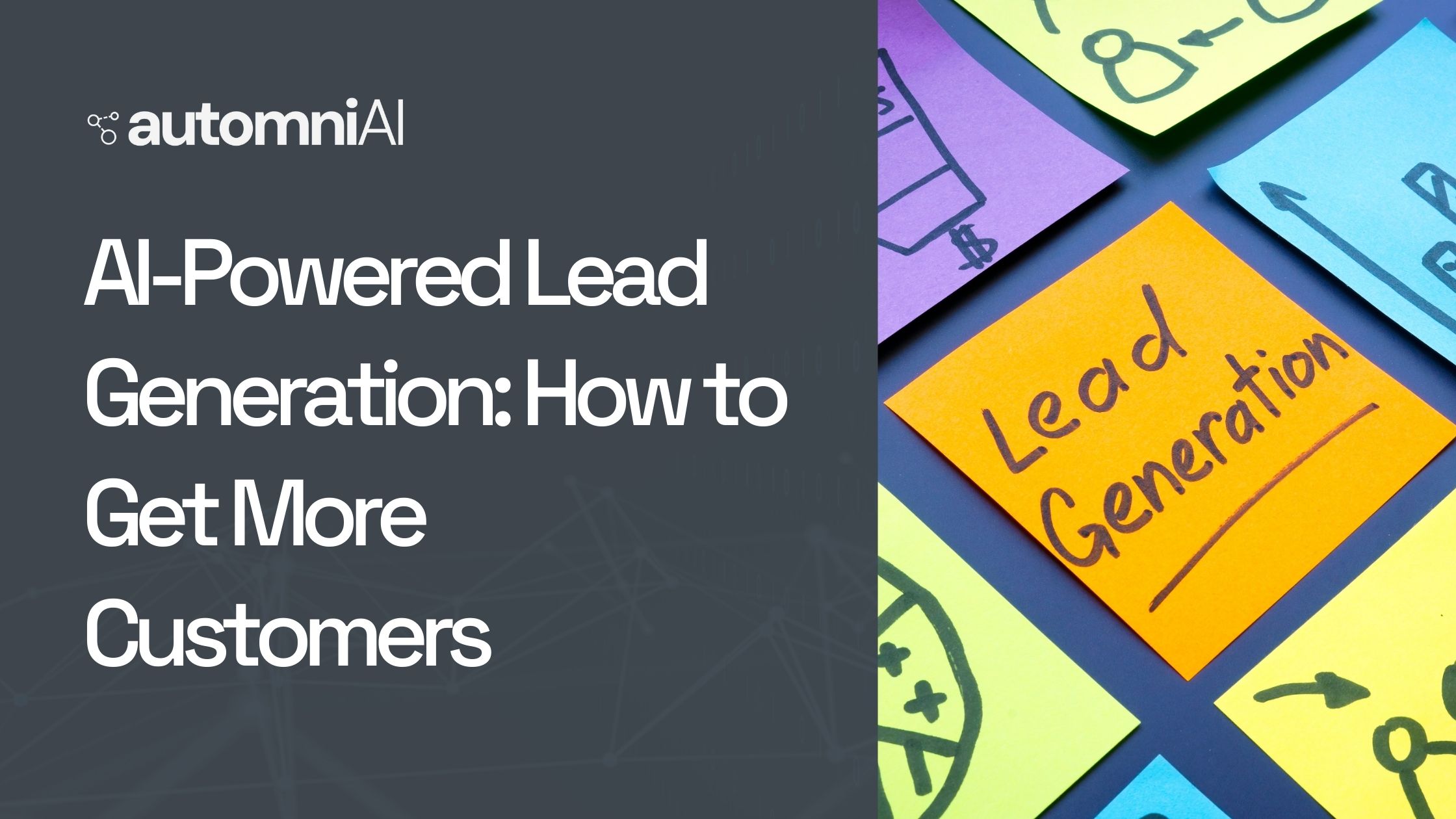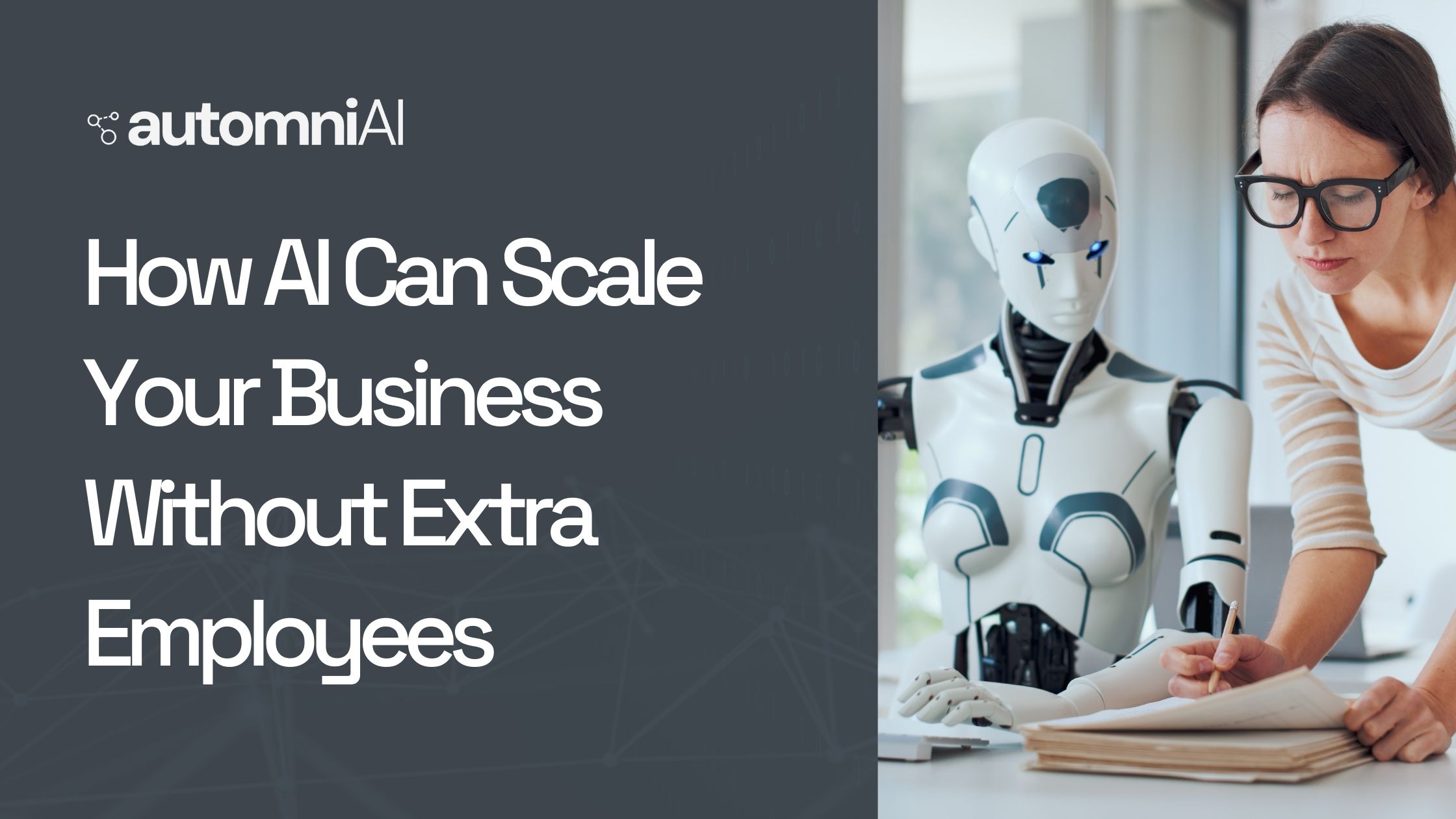In today’s digital world, businesses need more than just traditional marketing to attract and retain…

How AI Reduces Business Costs Instantly
1. Introduction
Every business, whether big or small, is always looking for ways to cut costs without sacrificing quality. As competition increases and economic uncertainties persist, reducing unnecessary expenses becomes a top priority. While traditional cost-cutting strategies like downsizing or renegotiating contracts can help, they often come with drawbacks.
That’s where technology steps in—more specifically, automation and intelligent systems that can optimize operations. Businesses that embrace smart solutions can instantly cut costs while maintaining (or even improving) efficiency.
But how exactly can AI help companies save money? From reducing labor costs to optimizing marketing budgets and cutting energy expenses, AI-driven tools are transforming how businesses operate. Let’s break down the most impactful ways AI is slashing business costs instantly.
2. Automating Repetitive Tasks
A lot of time (and money) is wasted on manual, repetitive tasks that don’t require much brainpower. Think of data entry, report generation, appointment scheduling, or handling routine emails. These tasks eat up valuable employee time—time that could be better spent on higher-value work.
How Automation Reduces Labor Costs
By automating repetitive tasks, businesses can significantly cut down on labor costs. Instead of hiring more staff to handle administrative work, companies can use software that completes these tasks in seconds. This not only reduces payroll expenses but also minimizes human error.
Improving Efficiency with Workflow Automation
With AI-powered automation, businesses can streamline workflows, ensuring faster completion of tasks without bottlenecks. Employees can focus on decision-making and problem-solving rather than tedious, repetitive work.
Examples of Businesses Saving Money with Automation
- Retail companies use automated checkout systems to reduce cashier costs.
- Law firms utilize document automation to cut down on manual paperwork.
- Healthcare providers automate patient appointment scheduling, saving administrative costs.
By implementing smart automation tools, companies can instantly see a drop in operational expenses while boosting productivity.
3. Enhancing Customer Support
Providing customer support is essential, but maintaining a large team of support agents is expensive. Businesses often struggle with balancing quality service and cost-effectiveness. AI-powered chat tools can step in to provide instant assistance while reducing expenses.
The Impact of AI-Powered Chatbots on Support Costs
Chatbots can handle common customer inquiries 24/7 without the need for human intervention. This means fewer employees are needed to manage support requests, significantly cutting labor costs.
Reducing the Need for Large Customer Service Teams
Rather than hiring a large support team, businesses can use AI-powered tools to manage common inquiries. Human agents can then focus on complex issues that require personal attention. This reduces the need for large call centers, saving thousands in salaries and overhead.
Faster Response Times and Improved Customer Experience
With automated support systems, customers no longer have to wait in long queues. Instant responses lead to improved satisfaction, which can ultimately boost sales and loyalty.
- Example: A company using chatbots for customer inquiries can cut support costs by 50% while maintaining a great user experience.
4. Smart Inventory Management
Managing inventory is tricky. Overstocking leads to unnecessary storage costs, while understocking results in lost sales. Businesses need a balance, and AI-powered inventory management tools help achieve that.
Preventing Overstock and Shortages
AI tools can analyze purchase patterns and predict demand, ensuring businesses stock just the right amount of products. This eliminates the risk of tying up capital in excess inventory while avoiding shortages that hurt revenue.
AI-Driven Demand Forecasting
By using real-time data, AI can predict which products will be in demand and when. This allows businesses to adjust inventory levels accordingly, preventing waste and reducing unnecessary expenses.
Reducing Warehousing and Storage Expenses
Storage costs add up quickly, especially for businesses holding too much unsold stock. AI-driven inventory systems help companies optimize storage space, cutting down on unnecessary warehouse expenses.
- Example: A retail company using AI-based demand forecasting can reduce inventory costs by 30%, freeing up cash flow for other investments.
5. Cutting Marketing and Advertising Costs
Marketing is crucial, but it can also drain a company’s budget fast. Instead of throwing money at ineffective campaigns, businesses can use AI-driven strategies to get better results while spending less.
Personalized Ad Targeting for Better ROI
AI analyzes customer behavior to determine which ads will perform best for different audience segments. This means companies can spend less on broad, ineffective campaigns and focus on high-converting audiences.
AI-Powered Content Creation and Management
AI tools can generate marketing content, write product descriptions, and even create social media posts, saving businesses from hiring large marketing teams.
Reducing Human Effort in Digital Marketing
By automating ad placements, social media management, and customer segmentation, AI helps businesses maximize their marketing budget while reducing manual work.
- Example: A business that previously spent $10,000 on broad-targeted ads might reduce ad spend to $6,000 while increasing conversions with AI-optimized targeting.
6. Optimizing Energy Consumption
Utility costs can be a huge drain on a company’s budget. Whether it’s office buildings, warehouses, or manufacturing plants, energy bills add up fast. The good news? Businesses can cut down on these expenses by using AI-driven energy management systems.
How AI Helps Reduce Utility Costs
AI can analyze energy usage patterns and optimize consumption, ensuring that businesses only use what’s necessary. Smart systems automatically adjust lighting, heating, and cooling based on real-time occupancy and weather conditions, leading to lower utility bills.
Smart Systems for Offices and Factories
- Smart thermostats adjust heating and cooling based on occupancy and outside temperature.
- AI-powered lighting systems turn off lights when no one is in the room.
- Energy management software identifies wasteful energy use and suggests improvements.
Real-World Savings from Energy Optimization
Many businesses have already seen major savings by implementing AI-driven energy solutions:
- A large retailer reduced energy costs by 25% by using AI-based climate control.
- A manufacturing plant saved thousands by automating machinery downtime based on energy demand.
Cutting energy costs doesn’t just save money—it also makes businesses more environmentally responsible.
7. Improving Recruitment and HR Efficiency
Hiring new employees can be a long, expensive process. Sorting through resumes, scheduling interviews, and onboarding take up valuable time and resources. AI tools can simplify these tasks, reducing hiring costs and improving efficiency.
AI in Resume Screening and Candidate Selection
AI-powered hiring tools can scan thousands of resumes in seconds, identifying the best candidates based on skills, experience, and qualifications. This eliminates the need for HR teams to spend hours manually reviewing applications.
Reducing Hiring Costs and Time-to-Hire
By automating the initial stages of recruitment, businesses can:
- Reduce the number of HR personnel needed.
- Speed up the hiring process, avoiding lost productivity due to unfilled positions.
- Minimize hiring mistakes by selecting candidates based on data rather than guesswork.
Automating Payroll and HR Processes
AI can also handle payroll, employee scheduling, and benefits management, reducing administrative costs and ensuring accuracy in salary calculations.
- Example: A mid-sized company reduced hiring costs by 30% by using AI-powered recruitment tools to streamline the hiring process.
8. Fraud Detection and Risk Management
Fraud and security breaches can cause massive financial losses. Businesses must constantly monitor transactions, detect suspicious activities, and prevent cyber threats—all of which require time and money. AI can help by automating risk management and fraud detection.
Preventing Financial Losses from Fraud
AI-driven fraud detection systems analyze transactions in real time, identifying patterns that indicate potential fraud. If a suspicious activity is detected, the system flags it instantly, reducing the chances of financial loss.
AI-Driven Security Systems for Businesses
Businesses can use AI-powered security tools to:
- Detect phishing attempts and cyber threats before they cause damage.
- Prevent unauthorized access to sensitive data.
- Reduce the need for manual security monitoring, cutting labor costs.
Reducing Insurance and Compliance Costs
Many insurance companies offer lower premiums to businesses using AI-based fraud detection tools, as these businesses are considered lower risk. AI can also ensure companies stay compliant with regulations, avoiding costly penalties.
- Example: A financial institution reduced fraud-related losses by 40% using AI-driven risk management systems.
9. Boosting Supply Chain Efficiency
The supply chain is one of the most expensive aspects of running a business. Inefficient logistics, poor planning, and transportation costs can quickly eat into profits. AI-powered solutions help businesses optimize every stage of the supply chain, reducing costs and improving efficiency.
Smarter Logistics and Route Optimization
AI can analyze traffic patterns, weather conditions, and delivery schedules to determine the most efficient shipping routes. This reduces fuel consumption, lowers transportation costs, and ensures faster deliveries.
Reducing Fuel and Transportation Costs
By optimizing delivery routes and reducing idle time, businesses can save money on fuel. AI-powered fleet management tools help businesses:
- Reduce vehicle maintenance costs by predicting when repairs are needed.
- Cut unnecessary mileage, lowering fuel expenses.
- Improve delivery times, boosting customer satisfaction.
AI-Powered Supplier Management
AI helps businesses choose the best suppliers based on price, quality, and reliability. Automated systems can also detect potential supply chain disruptions and suggest alternative solutions before issues arise.
- Example: A logistics company cut fuel costs by 20% using AI-based route planning software.
10. Enhancing Decision-Making
Making the wrong business decision can be costly. Traditionally, companies relied on gut feelings and trial-and-error approaches to make decisions. AI changes that by providing real-time insights based on data.
Data-Driven Insights for Better Business Decisions
AI can analyze vast amounts of data and provide recommendations, allowing businesses to make informed decisions. This minimizes risks and maximizes profits.
Reducing Costly Trial-and-Error Strategies
Instead of spending money on untested ideas, businesses can use AI simulations and predictive analytics to determine the best course of action before making an investment.
Real-World Examples of AI-Driven Decision-Making
- A retail chain used AI to analyze customer preferences and increased sales by 15%.
- A manufacturing company reduced production costs by 18% by using AI insights to optimize its supply chain.
Better decisions mean fewer financial losses and greater profitability.
11. Streamlining IT and Cybersecurity
Managing IT systems and cybersecurity can be expensive, especially for businesses with large networks and sensitive data. AI-powered IT management tools can automate many aspects of cybersecurity and IT maintenance, reducing costs.
Automated Threat Detection and Response
AI can detect potential cyber threats before they escalate, automatically blocking suspicious activity and preventing security breaches. This reduces the need for expensive manual monitoring.
Reducing Downtime and IT Maintenance Costs
AI-powered IT support can:
- Identify and fix software issues before they cause system failures.
- Automate routine maintenance tasks, reducing IT labor costs.
- Prevent costly downtime that affects productivity and revenue.
Cost-Effective Cybersecurity Measures
Businesses can use AI-driven cybersecurity solutions to secure networks without hiring an extensive IT security team, cutting costs while improving protection.
- Example: A company reduced IT maintenance costs by 35% using AI-powered system monitoring.
12. Lowering Operational Costs in Manufacturing
Manufacturers spend a fortune on equipment maintenance, material waste, and production errors. AI-powered systems help reduce these costs while improving efficiency.
AI-Powered Predictive Maintenance
Instead of waiting for machines to break down, AI can predict when maintenance is needed, preventing costly repairs and reducing downtime.
Reducing Waste and Production Errors
AI can detect defects in real time, preventing defective products from reaching customers and reducing material waste.
Increasing Output with Minimal Cost
By optimizing production schedules and minimizing human errors, AI helps manufacturers increase output without additional expenses.
- Example: A factory reduced maintenance costs by 40% by using AI-driven predictive maintenance.
13. Conclusion
Businesses constantly seek ways to cut costs, and AI-driven solutions offer immediate and long-term savings. From automating repetitive tasks to optimizing energy consumption and improving decision-making, AI helps companies reduce expenses without compromising quality.
Adopting smart technology isn’t just a cost-cutting strategy—it’s a way to stay competitive in an increasingly digital world. Companies that leverage AI effectively will not only save money but also improve efficiency, productivity, and overall business performance.
Frequently Asked Questions (FAQs)
1. Can AI really help businesses save money instantly?
Yes! AI-powered automation, energy management, and cost-optimization tools help businesses reduce expenses as soon as they are implemented.
2. How much can a business save by using AI?
The savings depend on the industry, but many companies report reducing costs by 20–50% through AI-driven solutions.
3. Is AI expensive to implement?
While there may be initial costs, the long-term savings in labor, energy, and operational efficiency outweigh the investment.
4. Can small businesses benefit from AI cost-saving strategies?
Absolutely! Even small businesses can use AI for marketing, customer service, and workflow automation to save money.
5. What is the best AI tool for reducing business costs?
It depends on your needs—AI chatbots, energy management software, and predictive analytics tools are among the most effective.




Comments (0)